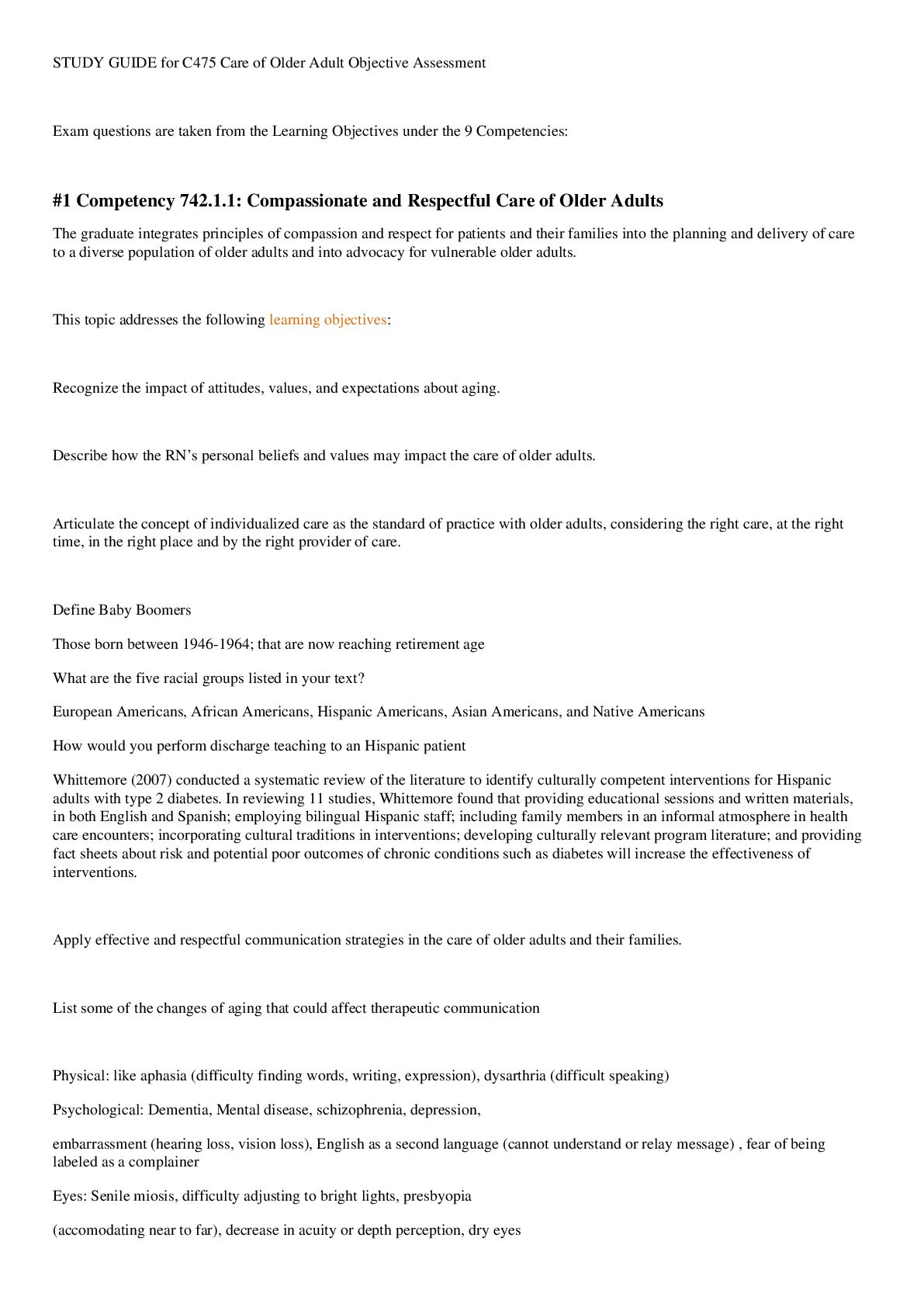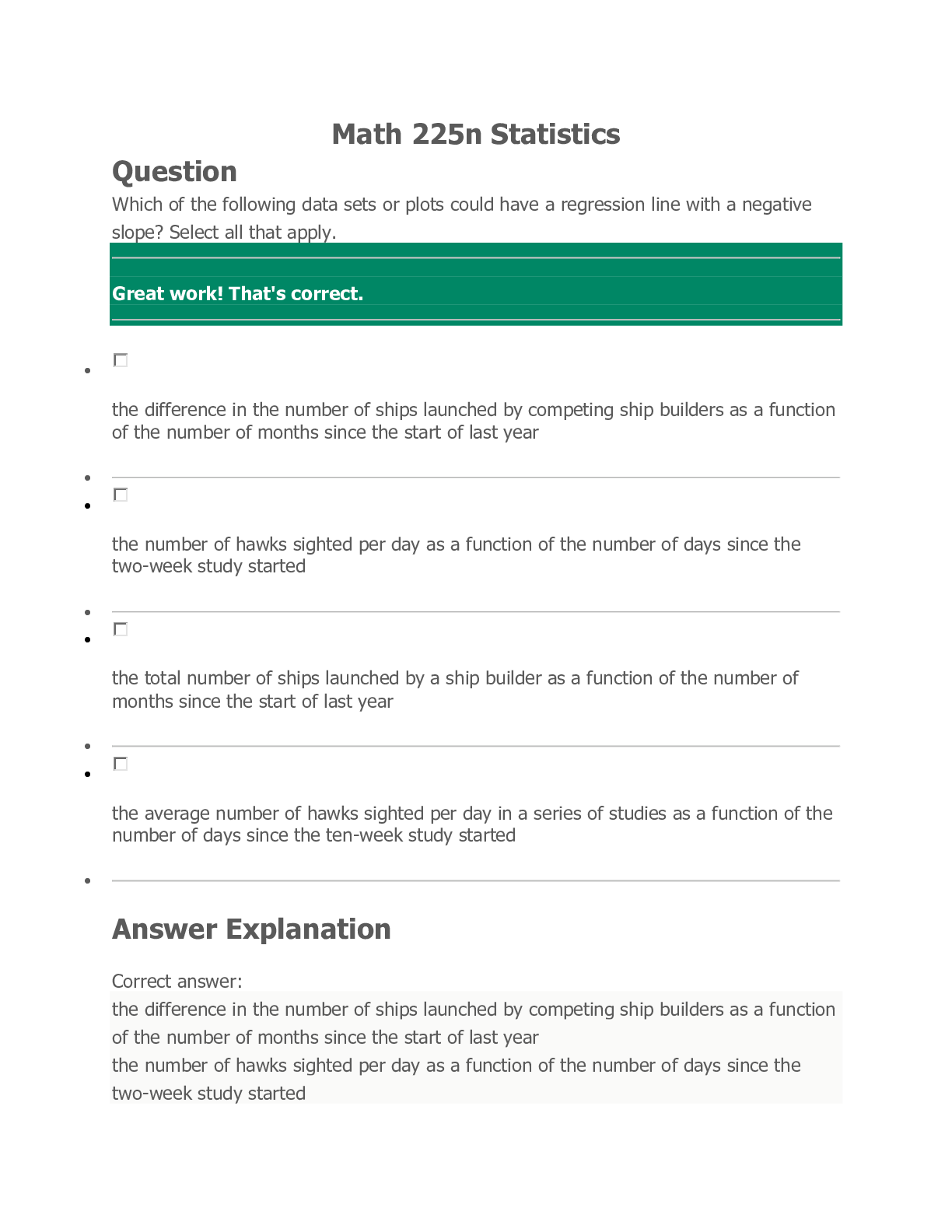*NURSING > EXAM REVIEW > Rivier University NSG 516 Tina Jones - HEENT Review Questions And Answers/Rated A (All)
Rivier University NSG 516 Tina Jones - HEENT Review Questions And Answers/Rated A
Document Content and Description Below
Tina Jones - HEENT Review Questions Suppose you had found that Tina’s pupils were reactive to both direct and consensual light, yet unequal in size. Which condition would you suspect? Correct: Ani... socoria is condition in which the pupils are unequal in size. Anisocoria can be found in about 20% of normal individuals. • Unequal visual acuity • Optic neuritis • Glaucoma • Anisocoria (Correct Response) Imagine that, during your physical exam with Tina, you had palpated an enlarged left supraclavicular lymph node. What would this finding have indicated? Correct: Malignancies originating in the pelvis or abdomen are likely to metastasize to the left supraclavicular lymph node, also known as Virchow's node. • Nothing, because this is a normal variant • A serious pathology (Correct Response) • A previous infection of the throat • An active infection of the throat If you had observed Arteriovenous (AV) nicking during the retinal exam on Tina, what would you have seen? Correct: AV nicking is the compression of the vein at arteriovenous crossings due to arterial stiffening. This results in bulging of the vein on either side of the artery making the vein appear to stop on either side of the artery. AV nicking is usually a result of chronic hypertension. • Transparent arterial walls • Opaque arterial walls • Tortuous arteries and veins • Vein stops on either side of the artery (Correct Response) Suppose that you had detected a click while palpating Tina’s temporomandibular joint (TMJ). What could have been the cause? Student Response: TMJ syndrome Model Note: Crepitus, limited mobility, and pain in the jaw are probable indicators of temporomandibular joint dysfunction (TMJ syndrome). The clicking noises are most likely caused by displacement of the disc between the condyle and fossa (ball and socket) at the temporomandibular joint. If Tina had reported new onset ear pain, what would have been the most useful finding to determine otitis media? Student Response: lack of mobility of the tympanic membrane during insufflation Model Note: A useful diagnostic finding that suggests otitis media is the lack of mobility of the tympanic membrane during insufflation. This immobility is caused by increased pressure of the middle ear when air or fluid is trapped due to infection and impairment of the Eustachian tube. Imagine that you inspected Tina’s throat and noted that her tonsils touched each other. How would you grade her tonsils on the tonsillar hypertrophy grading scale? Student Response: 4+ Model Note: Using the standardized tonsillar hypertrophy grading scale, the tonsils are graded 4+ because they touch one another and, therefore, occupy more than 75% of the space between the posterior pillars of the throat. [Show More]
Last updated: 2 years ago
Preview 1 out of 2 pages

Buy this document to get the full access instantly
Instant Download Access after purchase
Buy NowInstant download
We Accept:

Reviews( 0 )
$8.50
Can't find what you want? Try our AI powered Search
Document information
Connected school, study & course
About the document
Uploaded On
Sep 27, 2020
Number of pages
2
Written in
Additional information
This document has been written for:
Uploaded
Sep 27, 2020
Downloads
0
Views
216















